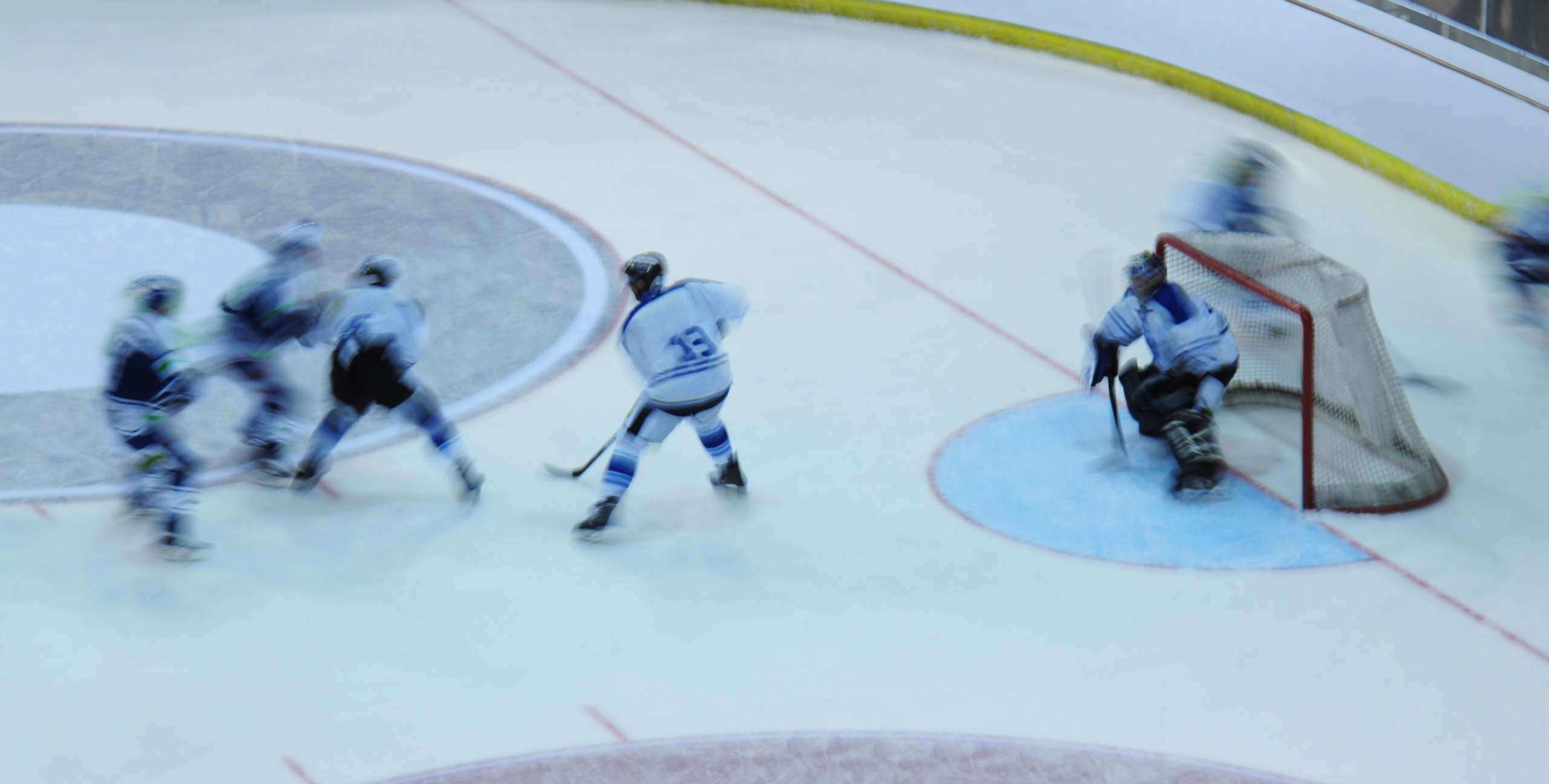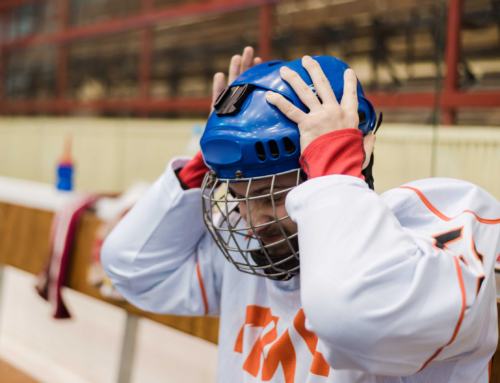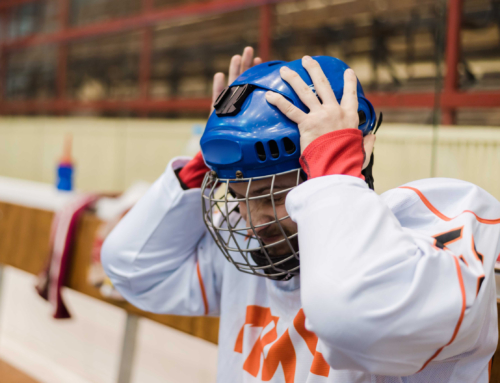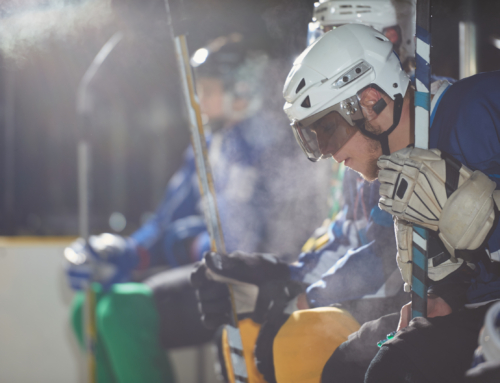Essential Hockey defensemen gap control angling techniques
The Foundation of Defense Understanding Gap Control
For a hockey defenseman, mastering the art of defense hinges on fundamental principles, and perhaps none is as critical as gap control. What exactly is gap control? Simply put, it’s the distance maintained between the defenseman and the attacking player they are defending. This distance isn’t static; it’s a dynamic space that changes constantly based on factors like speed, ice conditions, and the situation of the game. Effective gap control allows a defenseman to dictate the play, limit the attacker’s time and space, and ultimately prevent scoring chances. Without proper gap control, a defenseman becomes vulnerable, giving the opposing player too much room to build speed, make plays, or get a clean shot off.
Understanding gap control is the bedrock upon which advanced defensive techniques are built. It’s not just about skating backward; it’s about intelligently managing distance to be close enough to challenge but far enough to prevent being easily beaten. A tight gap forces the attacker to make a quick decision or a difficult play under pressure, often resulting in a turnover. Conversely, a loose gap invites the attacker to skate freely, build momentum, and exploit openings. Therefore, the ability to consistently maintain an optimal gap is a cornerstone skill for any aspiring or experienced defenseman.
The optimal gap varies depending on the situation. In open ice in the neutral zone, a slightly larger gap might be acceptable to prevent a breakaway. However, as the play moves into the defensive zone, the gap needs to shrink considerably to deny entry or limit options. Mastering this judgment call – knowing when to tighten and when to slightly loosen – is a key component of high-level defensive play. This leads directly into the related but distinct skill of angling, which works in tandem with gap control to guide the puck carrier into less dangerous areas of the ice.
Developing a strong sense of gap control requires countless hours of practice, focusing on skating backwards efficiently, maintaining balance, and constantly scanning the ice to assess the attacker’s speed and intentions. It’s a skill that blends physical ability with mental processing, making it complex but incredibly rewarding when executed properly. The journey to becoming a dominant defenseman starts with a solid grasp of this fundamental concept.
Why Angling is a Defenseman’s Best Friend
While gap control is about the distance, angling is about the direction. Angling is the technique defensemen use to steer the puck carrier towards a specific area of the ice, typically along the boards or into support players. Instead of simply skating straight back and allowing the attacker to choose their route, angling involves using body positioning and skating path to subtly or overtly influence where the attacker goes. When executed effectively, angling denies the attacker the ability to drive directly to the net, forces them into less threatening positions, and increases the likelihood of a turnover.
Think of angling as a funnel. The defenseman acts as one side of the funnel, guiding the puck carrier towards the narrow end, which is often the boards or an area where teammates are positioned to provide support or pressure. This is particularly crucial against fast or highly skilled forwards who excel in one-on-one situations. By taking away the middle of the ice and forcing the attacker wide, the defenseman significantly reduces the danger posed by the rush.
Angling also ties directly into team defensive strategy. Coaches often instruct defensemen to angle attackers towards specific zones – for example, always pushing attackers to their backhand side along the boards. This predictable pattern allows teammates to anticipate the play and position themselves accordingly for retrievals or defensive coverage. Good angling isn’t just an individual skill; it’s a critical component of cohesive team defense. The combination of precise gap control and effective angling techniques forms the core skill set for successful defensemen in modern hockey.
Furthermore, proper angling helps prevent opponents from gaining dangerous speed through the neutral zone and into the offensive zone. By meeting the attacker slightly off-center and guiding them, the defenseman disrupts their momentum and forces them to change their attack angle. This can make all the difference in stopping a clean zone entry and setting up a strong defensive stance. It’s a proactive approach to defending that empowers the defenseman rather than leaving them solely in a reactive mode.
Reading the Play Keys to Effective Gap Maintenance
Exceptional defensemen don’t just react; they anticipate. Reading the play is paramount for effective gap maintenance and angling. This involves constantly processing a multitude of visual cues to predict the attacker’s next move and adjust positioning accordingly. Key elements to watch include the attacker’s speed and direction, head position, stick position, and the location of teammates and opposing players on the ice. The ability to quickly read these cues allows a defenseman to proactively manage their gap and angle, rather than chasing the play.
For instance, if an attacker is carrying the puck wide with their head down, a defenseman can anticipate them trying to cut back to the middle or chip the puck past them. Recognizing this early allows the defenseman to maintain a slightly tighter gap and adjust their angle to take away the cutback lane. Conversely, if an attacker is skating at top speed directly towards the defenseman, maintaining a sufficient gap becomes crucial to avoid being blown by.
Communication is also a vital part of reading the play. Defensemen must communicate with their partner and forwards to understand where support is coming from and how to collectively defend the rush. Verbal cues like I’ve got the puck carrier or force him wide help coordinate defensive efforts and ensure everyone is on the same page. Effective communication enhances the ability of the defensive pair to work in concert, making gap control and angling a team effort, not just an individual battle.
Another aspect of reading the play involves understanding the game situation. Are you up a goal with minutes left, or trailing and needing a turnover? The score, time remaining, and even the momentum of the game can influence how aggressively a defenseman chooses to maintain their gap or employ angling. A low-risk approach might involve directing the play to the boards and focusing on containment, while a more aggressive stance might involve tightening the gap earlier to force a turnover high in the zone.
Developing the ability to read the play effectively comes through experience and dedicated focus during practices and games. It’s about building a mental database of common scenarios and understanding the likely outcomes based on the available information. Coaches can significantly help players develop this skill by breaking down game film and walking through different situations, highlighting the cues players should look for.
Mastering Hockey Defensemen Gap Control Angling Techniques
Putting gap control and angling together seamlessly is the hallmark of a masterful defenseman. It’s not enough to understand the concepts; the true skill lies in the fluid, almost instinctive, application of both simultaneously. When executed flawlessly, hockey defensemen gap control angling techniques make it incredibly difficult for opposing forwards to generate offense off the rush. The attacker finds themselves constantly pressured, with their options dwindling, and forced into low-percentage plays.
Mastery involves several key elements. First, skating proficiency is paramount. The ability to skate backward quickly, transition smoothly, and maintain balance while changing direction is essential for adjusting the gap and angle on the fly. Second, body positioning and stick positioning are critical. The defenseman’s body should be angled to guide the attacker, while the stick should be active, used to take away passing lanes and attempt poke checks at the opportune moment.
Third, patience is key. A defenseman must resist the urge to commit too early or reach excessively. Waiting for the right moment to challenge or attempt a poke check is vital. Committing prematurely can lead to being easily deked or skated around. Maintaining composure and trusting the process of guiding the attacker is crucial. It’s a delicate balance between being aggressive enough to challenge and patient enough to not get beaten cleanly.
Furthermore, awareness of defensive zone coverage responsibilities is integral. A defenseman’s gap control and angling should align with the team’s overall defensive system. Understanding where their partner is, where the forwards are providing back pressure, and where potential threats are lurking allows the defenseman to make informed decisions about how to angle the puck carrier and where to force them. The goal is not just to defend the individual rush but to contribute to a strong collective defense.
Mastering these techniques requires constant refinement and practice. Drills that simulate game situations, focusing on skating transitions, maintaining gap under pressure, and executing proper angling techniques, are invaluable. Video analysis, both of one’s own play and that of elite defensemen, can also provide crucial insights into subtle nuances that elevate performance. The journey to mastering hockey defensemen gap control angling techniques is continuous, demanding dedication and a commitment to improving every day.
Forcing the Issue Specific Angling Strategies
Beyond the basic principle of directing the puck carrier, there are specific angling strategies defensemen employ depending on the situation and the opponent. These strategies are designed to ‘force the issue’ for the attacker, making them uncomfortable and increasing the chance of a defensive win. One common strategy is forcing the attacker towards their weaker side or their backhand, making puck control and shooting more difficult. Another is using the boards as an extra defender, angling the attacker directly into the boards to pin them or force a quick, pressured play.
Against speedier players, a defenseman might use a shallower angle initially, focusing on maintaining a good gap and preventing them from cutting to the middle. As the attacker gets closer to the defensive zone, the angle can become steeper, forcing them wide. Against players known for their puck-handling prowess, the focus might be on using the stick to take away space and options while maintaining the angle, rather than attempting a risky poke check too early.
The concept of closing the gap with speed is also a specific angling tactic. This involves skating forward slightly at an angle towards the puck carrier as they enter the zone, attempting to meet them sooner and disrupt their entry before they gain full control in the offensive zone. This aggressive angle can be highly effective but also carries risk if not executed with precision and supported by teammates.
Another tactic is using the net as a landmark. Defensemen often angle attackers away from the prime scoring areas, particularly the front of the net. By positioning themselves to guide the attacker towards the corners, they protect the high-danger zones and make any potential shot attempt less threatening. This strategic angling prevents the attacker from establishing a direct path to the goal mouth.
Effective angling also involves understanding when to transition from angling to engaging physically. Once the attacker has been successfully angled into the boards or a less dangerous area, the defenseman must decide whether to initiate contact, attempt a stick check, or wait for support. This decision-making process is crucial and depends heavily on the specific situation and the defenseman’s judgment, built through experience and training focused on hockey defensemen gap control angling techniques.
Practical Drills for Improving Gap Control and Angling
Developing proficiency in gap control and angling requires dedicated practice focusing on game-like scenarios. Static drills can help with basic skating fundamentals, but integrating these skills under pressure is essential. Here are some practical drills coaches and players can use to hone hockey defensemen gap control angling techniques:
- Two-on-One Rush with Angling: Two forwards attack a defenseman from the neutral zone. The defenseman’s goal is to maintain gap control and angle one forward towards the boards, while their partner (if present) supports. This drill emphasizes communication, reading the play, and executing the angle under pressure.
- Skating and Gap Control Drills: Focus on backward skating technique, transitions (from forward to backward and vice versa), and maintaining a consistent distance from a partner skating forwards. Vary speeds and directions to simulate different game situations.
- Board Battle Angling Drill: An attacker attempts to gain the zone along the boards. The defenseman practices angling them tightly to the wall, using body positioning and stick work to gain possession or force a turnover.
- Containment Drill: A defenseman must contain a puck carrier within a designated area of the ice (e.g., a half-zone) using only gap control and angling, without actively trying to take the puck away initially. This helps players focus purely on positioning and guiding.
- Transition Angling Drill: Simulates a change of possession where the defenseman must quickly transition from forward skating to backward skating and establish gap control and angle on an attacking forward.
These drills should progressively increase in intensity and complexity to challenge players. Incorporating obstacles, varying the number of players, and adding retrieval components after a defensive stop can make them even more realistic. Coaches should provide specific feedback on skating technique, body positioning, stick placement, and decision-making during these drills.
Utilizing resources like the Guide to Using Hockey Canada Ultimate Skill Resource can also provide a wealth of additional drills and structured practice plans designed to develop fundamental and advanced hockey skills, including those crucial for defensemen. Combining structured drills with free-play situations allows players to internalize these concepts and apply them effectively in a competitive environment.
Another useful drill category focuses on defensive zone exits after successful gap control and angling lead to a turnover. Drills specifically designed for Drills for Developing Powerful Defensive Zone Exits are a natural follow-up, as winning the defensive battle is only the first step; transitioning to offense is the next critical phase.
Consistency and repetition are key to mastering hockey defensemen gap control angling techniques. Players should strive to apply these concepts in every practice drill, even those not explicitly focused on defense. The more they practice maintaining proper spacing and using their body and stick to guide attackers, the more instinctive these actions will become during games.
Avoiding Common Mistakes in Defensive Positioning
Even experienced defensemen can fall prey to common errors that undermine their gap control and angling efforts. Recognizing and actively working to correct these mistakes is crucial for continuous improvement. One frequent error is opening the gate, which occurs when a defenseman’s body positioning allows the attacker a direct lane to the net, usually by turning their back or stepping incorrectly. Proper angling always involves keeping the body between the puck carrier and the net, forcing them to go around.
Another common mistake is committing too early or lunging. Impatience can lead to a defenseman overextending their stick or body, making them vulnerable to dekes or allowing the attacker to skate by them easily. Maintaining a controlled gap and waiting for the opportune moment to challenge is vital. Reaching is often a symptom of poor gap control – if the gap is too large, a player might feel compelled to reach with their stick, which compromises balance and defensive structure.
Flat-footed skating is another issue. A defenseman must constantly be moving their feet, shuffling, and pivoting to maintain balance and adjust their gap and angle. Standing still or being caught flat-footed makes it incredibly easy for an attacker to gain an advantage. Active feet are essential for reactivity and agility in defensive scenarios.
Lack of communication is also a significant pitfall. Failing to communicate with a defensive partner or forwards can lead to confusion, players defending the same attacker, or leaving open lanes to the net. Clear, concise communication helps coordinate defensive efforts and ensures everyone understands their responsibilities in a given situation. Silent defense is often ineffective defense.
Finally, neglecting stick positioning is a common oversight. The stick is a defenseman’s primary tool for taking away passing lanes, challenging the puck, and disrupting the attacker’s rhythm. Holding the stick improperly, or not actively using it to take away space, diminishes a defenseman’s effectiveness regardless of their gap control or angling skills. The stick should be kept on the ice, covering potential pass or shot lanes, and ready to engage when needed.
Addressing these common mistakes requires awareness, feedback from coaches, and deliberate practice. Video review can be particularly helpful in identifying recurring errors that players might not even realize they are making. Focusing on fundamental techniques, such as maintaining active feet, keeping the body angled correctly, and using the stick effectively, will help mitigate these issues and enhance overall defensive play.
Elevate Your Game Becoming a Dominant Defenseman
Becoming a dominant defenseman is a journey that extends beyond mastering individual skills like hockey defensemen gap control angling techniques. It involves developing a comprehensive understanding of the game, cultivating physical and mental toughness, and consistently applying fundamental principles under pressure. Dominant defensemen are not just defenders; they are play drivers, leaders, and integral components of their team’s success.
To elevate your game, consider these areas of focus. First, continue refining your skating. Power, agility, and transition speed are non-negotiable for modern defensemen. Work on edge work, crossovers, and backward skating efficiency constantly. Second, develop your puck-handling and passing skills under pressure. Dominant defensemen can retrieve pucks under forechecking pressure and make quick, accurate breakout passes. This transitions the team from defense to offense smoothly and efficiently.
Third, enhance your physical strength and conditioning. Battles along the boards, clearing the front of the net, and absorbing contact require significant strength and endurance. A robust off-ice training program is essential. Fourth, improve your hockey sense. This involves reading the play, anticipating opponents, understanding team systems, and making smart decisions quickly under pressure. Watch games, analyze situations, and discuss strategy with coaches and teammates.
Fifth, develop leadership qualities. Dominant defensemen are often vocal on the ice, directing teammates, organizing defensive zone coverage, and providing support. They lead by example through their effort and commitment. Finally, embrace the mental side of the game. Stay calm under pressure, learn from mistakes, and maintain a positive attitude. Mental toughness is a key differentiator at higher levels.
Mastering hockey defensemen gap control angling techniques provides the foundation, but building upon that with a well-rounded skill set and a deep understanding of the game is what separates good defensemen from dominant ones. It requires dedication, hard work, and a relentless pursuit of improvement in all facets of the game. Seek out opportunities to learn, accept feedback, and challenge yourself constantly. By focusing on these areas, you can significantly elevate your game and become a truly impactful player on the ice.
Remember, continuous learning is vital in hockey. Exploring advanced concepts and training methods, such as those that discuss the evolution of modern strategic hockey player development, can provide new insights and approaches to refine your game further. The best defensemen never stop learning and adapting.
Ultimately, becoming a dominant defenseman is about more than just preventing goals; it’s about controlling the flow of the game, initiating offensive transitions, and being a reliable, impactful presence every time you step onto the ice. It’s a challenging but rewarding goal for any player committed to excellence in the defensive position.
Consider also exploring resources from organizations like Hockey Canada’s skills development programs, which offer valuable insights and training materials applicable to defensemen at all levels. Combining fundamental techniques with advanced understanding and physical preparation is key to reaching your full potential.
Have questions? Contact us here.

We use only the finest ingredients to produce stellar tastes.












